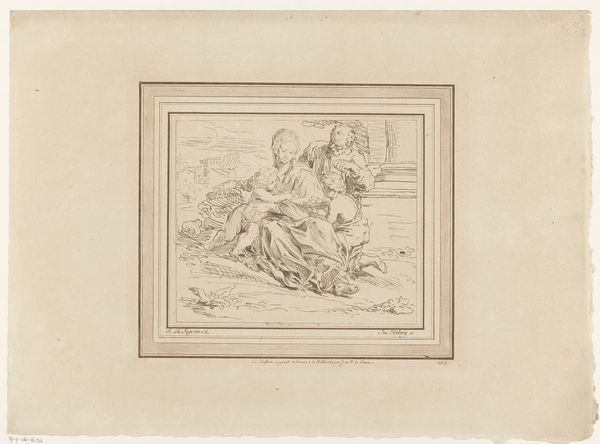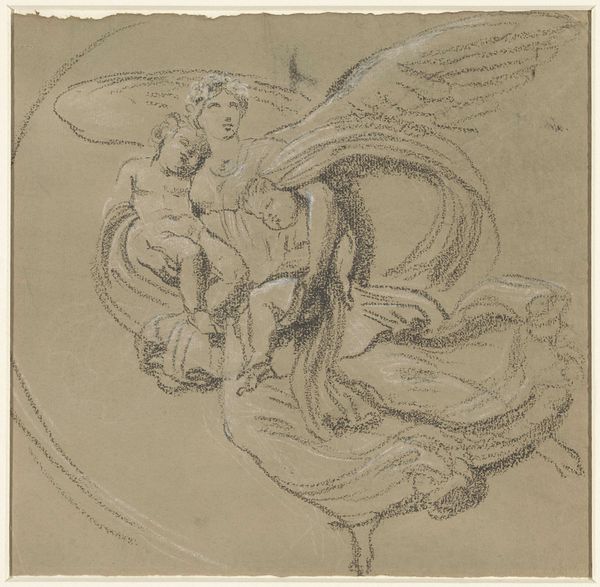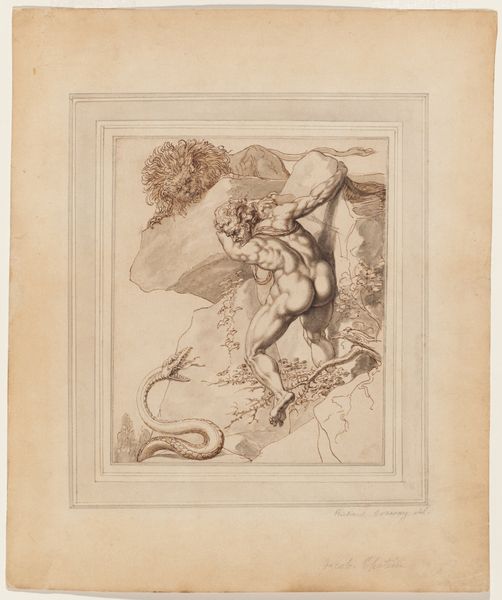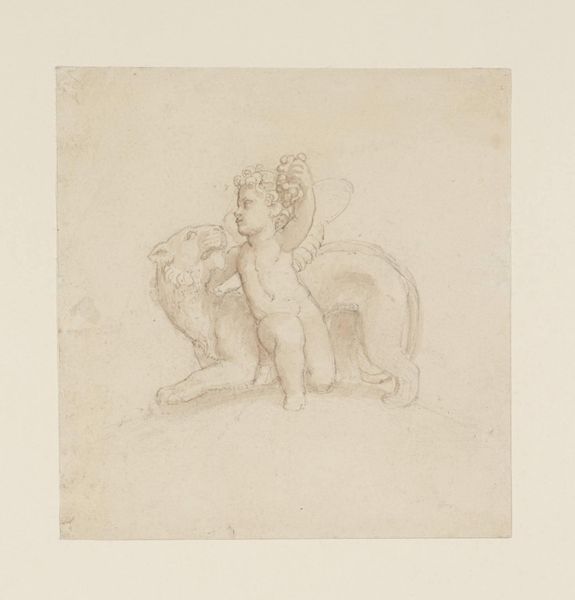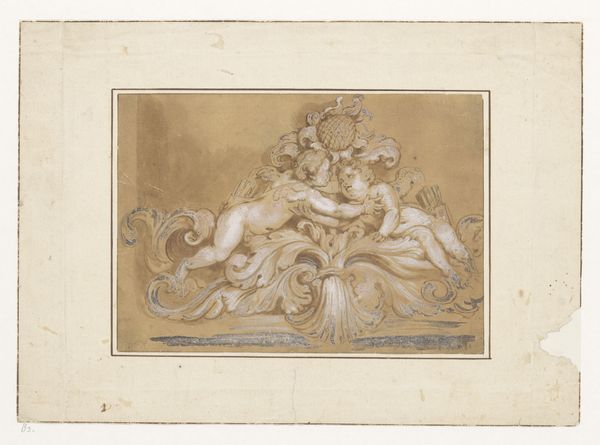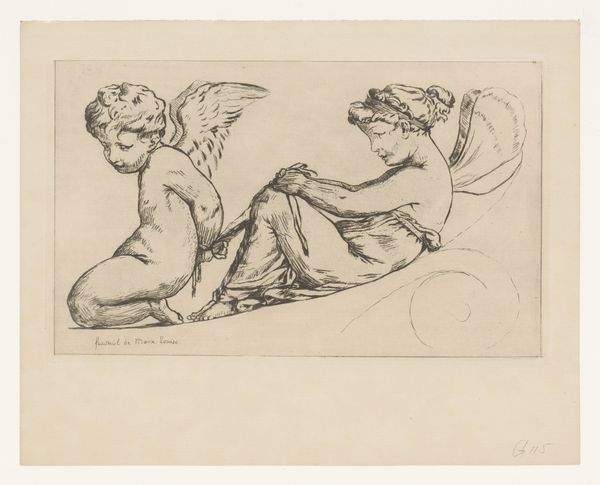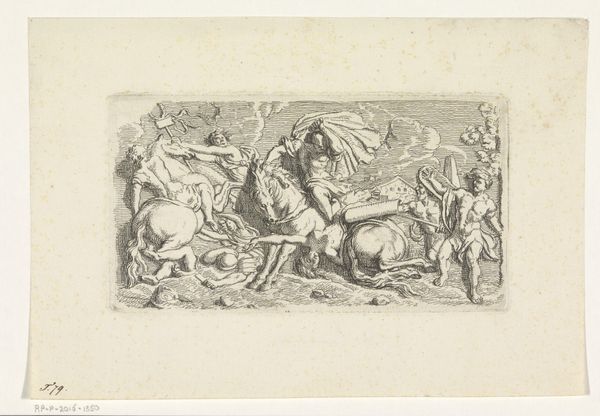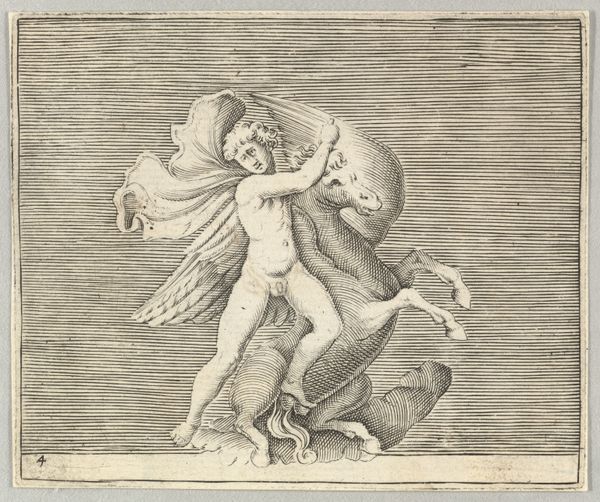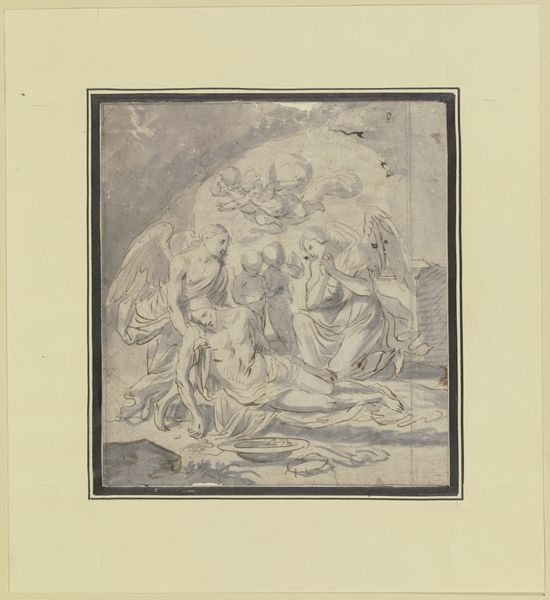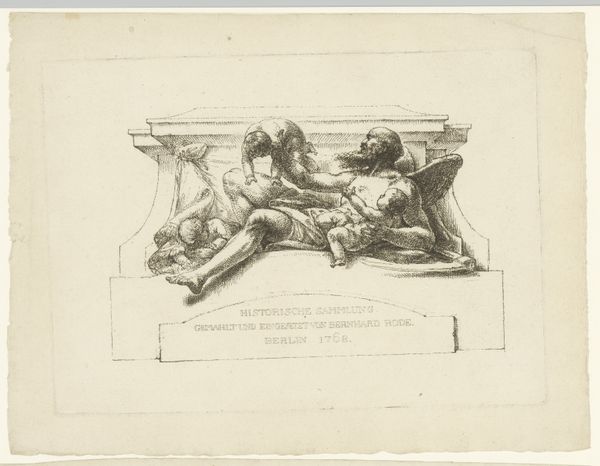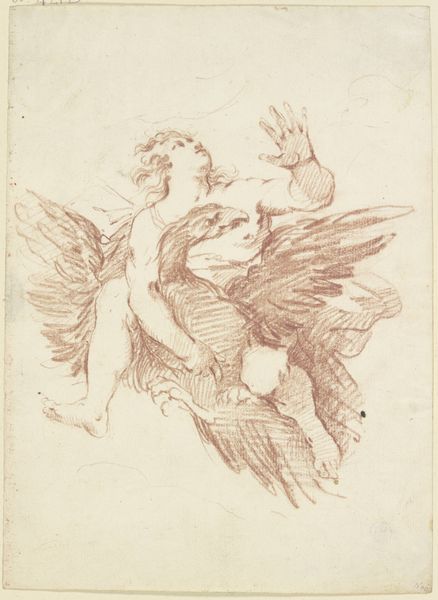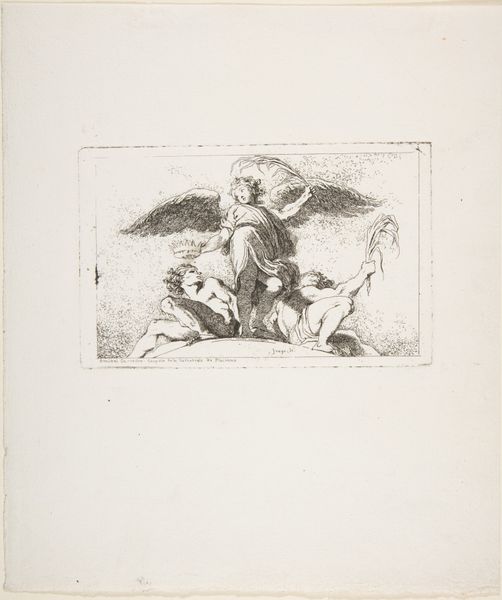
Foliate Amor Pouring a Drink for a Griffin 1601 - 1689
0:00
0:00
drawing, print, ink, engraving
#
drawing
#
allegory
# print
#
classical-realism
#
ink
#
history-painting
#
engraving
Dimensions: 5 3/8 x 9 in. (13.6 x 22.8 cm)
Copyright: Public Domain
Curator: Let's explore this intriguing drawing attributed to Charles Errard, titled "Foliate Amor Pouring a Drink for a Griffin," likely created sometime in the 17th century. Editor: My first impression is that it’s simultaneously whimsical and classically austere. The flowing lines of the griffin and the figure, contrasted with what appears to be a rigidly bordered scene. It has an appealing formality, especially given the fantastical subject matter. Curator: Indeed. Erhard’s masterful use of ink and engraving here highlights a sophisticated understanding of Classical allegory, blending it with elements of the natural world. Notice how Amor, with foliate legs, merges into the decorative frame. Editor: Absolutely. The griffin itself is such a loaded image, isn't it? A composite creature embodying both earthly strength, with its lion's body, and celestial vigilance, with its eagle's head and wings. And this Amor, pouring perhaps nectar, reinforces the link to Classical mythology—specifically, is this the concept of power being tamed by love, or civilization tempering wild instinct? Curator: I agree—it seems as if the material conditions, the print medium, also are working together to create some effect, in that it enabled Errard's designs to circulate, reaching a wider audience and standardizing design motifs across different workshops in other media such as tapestries or furniture. I suppose the material also contributes to this standardization. Editor: It is an important element. Also, the way Errard used hatching to render form and volume from simple lines is technically superb, giving the composition remarkable depth. We should highlight how he elevates the status of draftsmanship in the artistic production process. Curator: I also appreciate that the material form of this drawing, as print, gives it a tangible connection to a broader workshop context – perhaps a template for other decorative items. It gives us clues as to where artistic energies were directed in 17th century European art. Editor: A final point: note how the image leaves us pondering power dynamics represented in classical symbology, Errard allows the viewer a window onto the dialogue between reason and instinct. Curator: It makes you consider the broader world that art and artists inhabit!
Comments
No comments
Be the first to comment and join the conversation on the ultimate creative platform.
